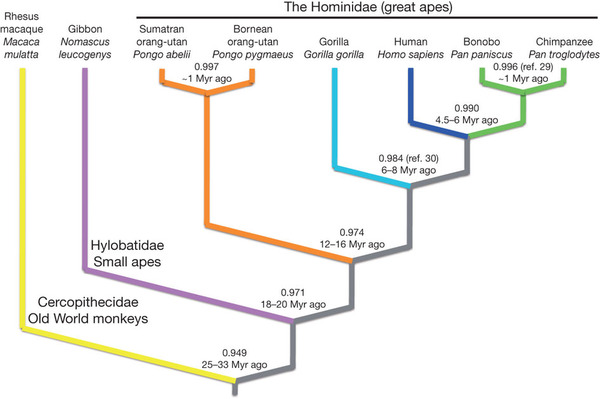When Dr. Hurd quoted from Nature magazine as an authority, I thought of Loudmouth's claim:
“We find rocks on Earth that are over 4 billion years old.”
Good lead line! (I’m being sarcastic). We also found rocks on Earth 6 billion years old. Which is the truth?
Here’s the full story:
Flaws in dating the earth as ancient
byAlexander R. Williams
In 1986 the world’s leading science journal,
Nature, announced that the most ancient rock crystals on earth, according to isotope dating methods, are 4.3 billion years old and come from Jack Hills in Western Australia.
W. Compston and R.T. Pidgeon (
Nature321:766–769, 1986) obtained 140 zircon crystals from a single rock unit and subjected them to uranium/uranium concordia (U/U)
1 and uranium/thorium concordia (U/Th)
2 dating methods. One crystal showed a U/U date of 4.3 billion years, and the authors therefore claimed it to be the oldest rock crystal yet discovered.
A serious problem here is that all 140 crystals from the same rock unit gave statistically valid information about that rock unit.
3 No statistician could ever condone a method which selected one value and discarded all the other 139. In fact, the other 139 crystals show such a confusion of information that a statistician could only conclude that no sensible dates could be extracted from the data.
A further problem is that the 4.3 billion-year-old zircon, dated according to the U/U method, was identified by the U/Th method to be undatable. An unbiased observer would be forced to admit that this contradiction prevents any conclusion as to the age of the crystal. But these authors reached their conclusion by ignoring the contradictory data! If a scientist in any other field did this he would never be allowed to publish it. Yet here we have it condoned by the top scientific journal in the world.
This is not an isolated case. I selected it because it was identified by the journal editors as a significant advance in knowledge. Another example is the work of F.A. Podosek, J. Pier, O. Nitoh, S. Zashu, and M. Ozima (
Nature334:607–609, 1988). They found what might have been the world’s oldest rock crystals, but unfortunately they were too old!
They extracted diamonds from rocks in Zaire and found by the potassium-argon method that they (the diamonds) were
six billion years old. But the earth is supposed to be only 4.5 billion years old. So Podosek and friends decided they must be wrong. They admitted, however, that if the date had not been contradicted by the ‘known’ age of the earth, they would have accepted it as valid.
This clearly shows two fundamental flaws in long-age isotope dating.
First, the dates are readily discarded if they do not fit the preconceived notions of the experimenter. Such a practice is not acceptable in any other field of science because it destroys the objectivity upon which science has built its reputation. Isotope dating is therefore not the objective, absolute dating method it is often claimed to be.
Second, it is impossible to tell, from the isotope information alone, when the dates are right and when they are wrong.
When I presented this and similar criticisms of isotope dating to a gathering of the Lucas Heights Scientific Society (Sydney, Australia) in 1989, the only response that came from the chief of the division responsible for isotope dating at the Australian Nuclear Science and Technology Organization was the question, ‘Do you have a better dating method?’
I said ‘No’, and he appeared to be satisfied that if there are no better methods of dating, then these are good enough. But can you ride a bicycle into the past simply because no one else has a better time-machine? Of course not. In the same way it is absurd to argue that an inadequate method is adequate because nothing better is available.
4
References and notes
1. Uranium/uranium concordia—this method involves graphically comparing the238U/206Pb ratio with the235U/207Pb ratio.
2. Uranium/thorium concordia—in this method the238U/206Pb ratio is graphically compared with the232Th/203Pb ratio.
3. The rock unit involved is a metamorphosed sandstone (quartzite) in which the zircon crystals represent grains eroded from source rocks (e.g. granites) and deposited with the sand. Thus the ‘ages’ of the zircon crystals represent the ‘age’ of the source rock(s) and not the ‘age’ of the quartzite.
4. Further details of these examples can be found in my fuller technical article on this subject in the
Creation Ex Nihilo Technical Journal6(1):2–5, 1992.

